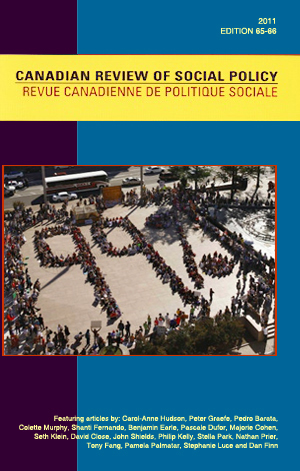What Next for the U.S. Living Wage Movement?
Abstract
The modern U.S. living wage movement began in Baltimore, Maryland, in 1994. Since then, the movement has expanded to more than 140 cities and counties across the country. Living wage ordinances take many different forms, but all utilize various points of leverage in an effort to raise the minimum wage for workers. The most common form applies to public service contracts, but they can also cover economic development projects, city-owned property such as airports, colleges, direct city employees, tourist zones, and a small number even apply to all workers in a city. However, the movement has been limited in at least three ways. Living wage campaigns often focus on the “least common denominator” politics and so coalitions do not necessarily share values beyond the living wage. Second, as activists try to expand coverage through more expansive ordinances, the opposition has become more fierce and campaigns are harder to win. Finally, the local campaigns do not always include an analysis of global labor markets. Still, the movement continues, and we will likely see new efforts to raise state and federal minimum wages in the coming years. Le mouvement contemporain pour un salaire minimum convenable aux États-Unis a vu le jour à Baltimore (Maryland), en 1994. Depuis, le mouvement a gagné plus de 140 villes et comtés du pays. Les ordonnances sur le salaire minimum convenable peuvent revêtir différentes formes, mais toutes ont recours à divers leviers pour augmenter le salaire minimum des travailleurs. La forme la plus courante concerne les contrats de services publics, mais il peut également s'agir de projets de développement économique, de biens détenus par les villes (tels que des aéroports), de collèges, de salariés employés directement par la ville, de zones touristiques et même, dans une minorité de cas, de tous les employés d'une ville. Toutefois, ce mouvement a été limité par au moins trois facteurs. Tout d'abord, les campagnes pour un salaire minimum convenable mettent souvent l'accent sur la politique du « plus petit dénominateur commun », de sorte qu'outre le salaire minimum, les coalitions ne partagent pas nécessairement d'autres valeurs. Par ailleurs, alors que les activistes tentaient d'obtenir des ordonnances de plus grande envergure, l'opposition s'est durcie et les campagnes sont devenues plus difficiles à remporter. Enfin, les campagnes locales ne prennent pas toujours en compte l'analyse des marchés du travail à l'échelle mondiale. Pourtant, le mouvement continue, et il est fort probable que de nouvelles initiatives destinées à relever le niveau des salaires minimums dans les États et à l'échelle fédérale verront le jour dans les années à venir.Downloads
Published
How to Cite
Issue
Section
License
1-The author guarantees that the manuscript is an original work not published elsewhere in print or electronically in whole or in part, except in abstract form, that the author has the full power to make this contribution, and that the manuscript contains no matter libelous or otherwise unlawful or which invades the right of privacy or which infringes any proprietary right.
2-The author guarantees that the manuscript has not been previously published in print or electronically and that if the manuscript contains any tables, figures or images fully reproduced or closely adapted from previously published material, the author must obtain the necessary permission from the author/publisher holding the original copyright prior to publication in CRSP. The author may be required to produce evidence of permission granted to CRSP’s editors.
3-As a condition of publication in CRSP, the author assigns all copyright to CRSP, including but not limited to the right to publish, republish, and otherwise distribute this manuscript in print, electronic, or other formats. As CRSP is a non-profit interdisciplinary scholarly journal, the author will receive no royalty or other monetary compensation for the assignment set forth in this agreement.
For the purpose of full disclosure, CRSP will not normally use the content provided by the author in a commercial venture, but for the purpose of disseminating the author’s content to as many readers as possible. For distribution, third parties engaging in commercial activities may be contracted to distribute the content globally, and such parties may make a profit out of the author’s content in their normal course of business. CRSP will not pay the author or reimburse the author in any form based on such commercial activities because the conduct of such commercial activities is outside the control of CRSP.
Any future reference to or use of this published material by the authors must acknowledge CRSP as the original place of publication.
PERMISSION REQUEST/ARCHIVING
Permission is given to author(s) receiving funding via Tri-Council Agencies, the Canadian Institutes of Health Research (CIHR), the Natural Sciences and Engineering Research Council of Canada (NSERC) and the Social Sciences and Humanities Research Council (SSHRC), to make their publications freely available in an Open Access repository within the stated deadline by the Tri-Council Agencies (12 months following publication). Archiving of publication must be a manuscript copy bearing none of the CRSP headers, footers or any other distinguishing marks. No links to the article on the CRSP website is permitted.
Permission requests from third parties to reproduce articles in part or full in academic/educational publications can be directed to the managing editor of CRSP, and will not be unreasonably denied.

